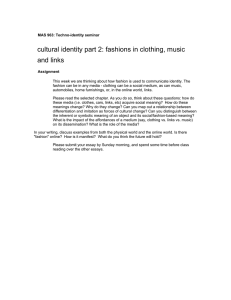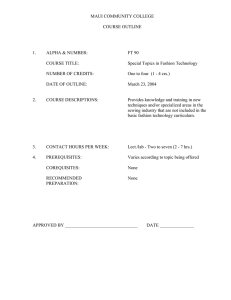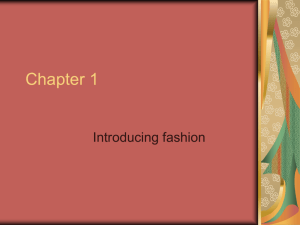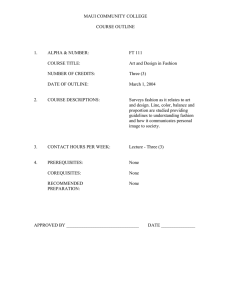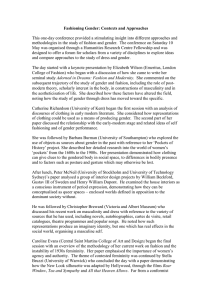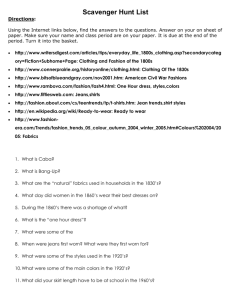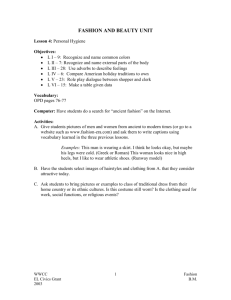c5. definitive course document and course file
advertisement
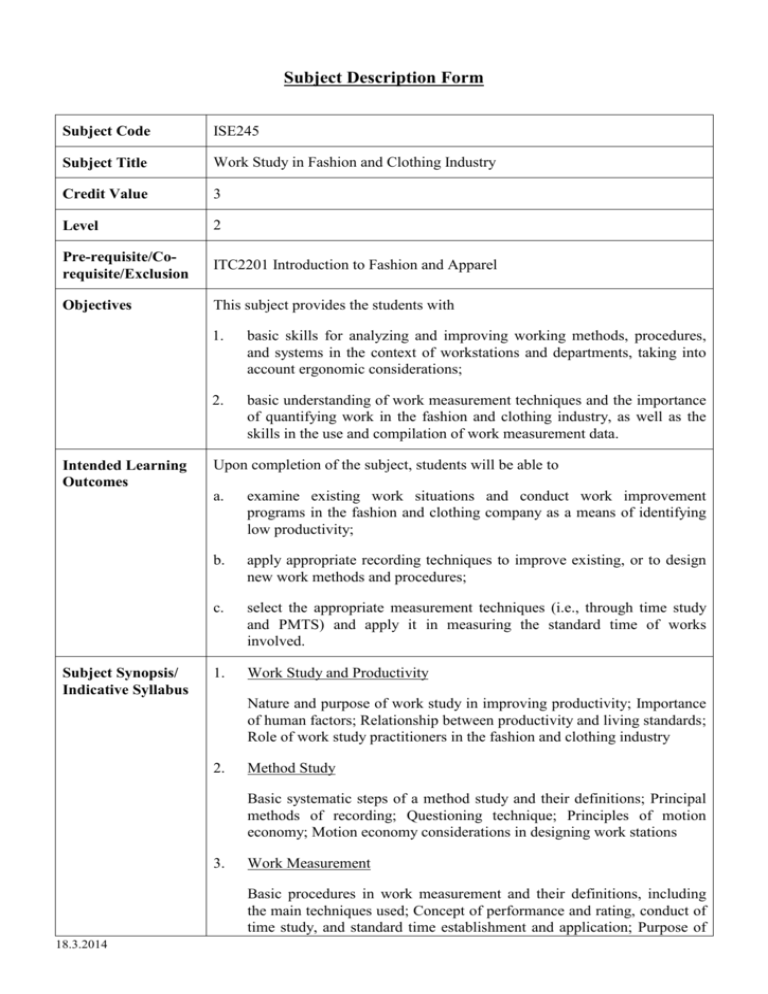
Subject Description Form Subject Code ISE245 Subject Title Work Study in Fashion and Clothing Industry Credit Value 3 Level 2 Pre-requisite/Corequisite/Exclusion ITC2201 Introduction to Fashion and Apparel Objectives This subject provides the students with Intended Learning Outcomes Subject Synopsis/ Indicative Syllabus 1. basic skills for analyzing and improving working methods, procedures, and systems in the context of workstations and departments, taking into account ergonomic considerations; 2. basic understanding of work measurement techniques and the importance of quantifying work in the fashion and clothing industry, as well as the skills in the use and compilation of work measurement data. Upon completion of the subject, students will be able to a. examine existing work situations and conduct work improvement programs in the fashion and clothing company as a means of identifying low productivity; b. apply appropriate recording techniques to improve existing, or to design new work methods and procedures; c. select the appropriate measurement techniques (i.e., through time study and PMTS) and apply it in measuring the standard time of works involved. 1. Work Study and Productivity Nature and purpose of work study in improving productivity; Importance of human factors; Relationship between productivity and living standards; Role of work study practitioners in the fashion and clothing industry 2. Method Study Basic systematic steps of a method study and their definitions; Principal methods of recording; Questioning technique; Principles of motion economy; Motion economy considerations in designing work stations 3. Work Measurement Basic procedures in work measurement and their definitions, including the main techniques used; Concept of performance and rating, conduct of time study, and standard time establishment and application; Purpose of 18.3.2014 allowances with specific examples in the fashion and clothing industry (e.g., personal, fatigue, machine delay, contingency allowances, etc.) Teaching/Learning Methodology Assessment Methods in Alignment with Intended Learning Outcomes A mixture of lectures, tutorial, and laboratory exercises are employed to deliver the various topics in this subject. Some of these are covered in a problem-based format in order to enhance the learning objectives. Others are covered by directed study in order to enhance the students’ ability of “learning to learn.” Some case studies, largely based on real experience, are used to integrate the topics, demonstrating to the students how various techniques are inter-related and how they are applied in real life situations. Specific assessment methods/tasks % Intended subject learning outcomes to weighting be assessed 1. Continuous Assessment Laboratory Exercises 20% Test 20% 2. Examination 60% Total 100% a b c Laboratory exercises are designed to allow students to apply various work study techniques in order to solve simulated industrial problems, and to allow them to practice their skills using various types of equipment. Tests and examinations are designed to assess the students’ analytical skills in relation to individual ability, specifically, in using various work study techniques in improving productivity and in communicating effectively with others in the fashion and clothing industry. Student Study Effort Required Class contact: Lectures 21 Hrs. Tutorials and Laboratories 18 Hrs. Other student study effort: Self-study and Revision Total student study effort Reading List and References 18.3.2014 81 Hrs. 120 Hrs. 1. Freivalds, A and Niebel, BW 2009, Niebel’s Methods, Standards, and Work Design, 12th edn, McGraw-Hill 2. Wilson, Mark A and Dierdorff, Erich C 2012, The Handbook of Work Analysis: Methods, Systems, Applications and Science of Work Measurement in Organizations, Routledge 18.3.2014
